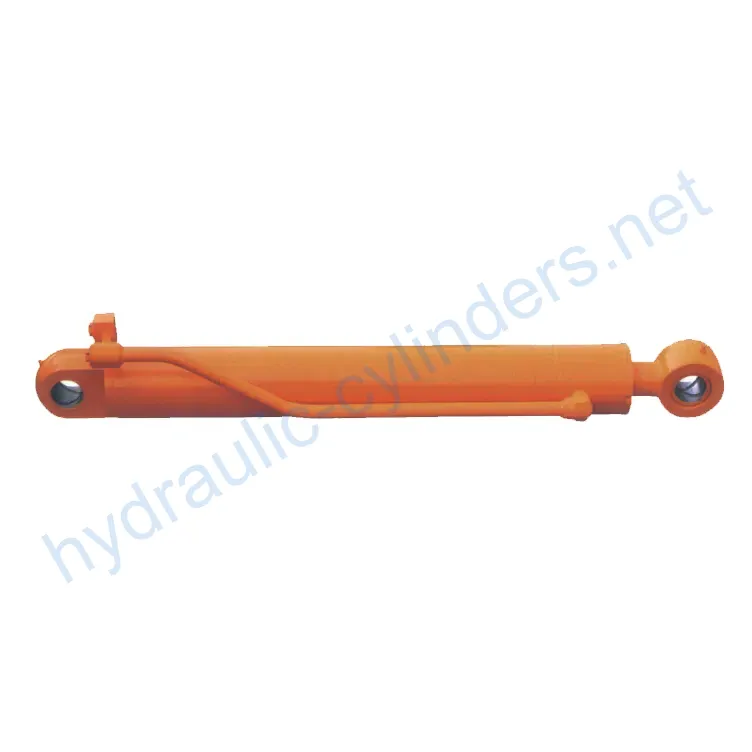Arm Cylinder For Bonny WZT46-7/45-7
Hidrolik silindir üreticilerinden, tedarikçilerinden ve mekanik ürünlerin ihracatçılarından biri olarak, hidrolik silindirler ve diğer birçok ürünü sunuyoruz.
Ayrıntılar için lütfen bizimle iletişime geçin.
Posta:sales@hydraulic-cylinders.net
Hidrolik silindir üreticisi tedarikçisi ihracatçısı.
Arm Cylinder For Bonny WZT46-7/45-7
Introduction
The Arm Cylinder for Bonny WZT46-7/45-7 is a specially designed hydraulic cylinder that provides linear motion and power to the arm of various types of machinery, such as excavators, cranes, and mechanical arms. The arm cylinder plays a crucial role in hydraulic systems, enabling the efficient movement and control of additional tools or attachments. These cylinders not only ensure smooth motion but also withstand heavy loads, ensuring high efficiency and reliability of the machinery under various operating conditions.

Features
- Efficient Power Transmission: The arm cylinder provides powerful linear motion and force, ensuring high performance of the mechanical arm in various operations.
- Precise Control: Through the hydraulic system, the arm cylinder enables precise motion control, making the operation of attached tools more flexible and accurate.
- Strong Durability: Arm cylinders are typically made from high-strength materials with excellent wear and corrosion resistance, suitable for long-term use in harsh environments.
- Multi-functional Adaptability: These cylinders are widely applicable to various machinery such as excavators, cranes, and mechanical arms, adapting to different job requirements.
- Easy Maintenance: The design considers ease of maintenance and replacement, making regular inspections and upkeep more convenient and reducing equipment downtime.

Applications
- Construction Engineering: In excavators and cranes, the arm cylinder controls the movement of the bucket or boom, facilitating earthmoving, material handling, and structural installation.
- Manufacturing Industry: In automated production lines, the arm cylinder is used for the motion of mechanical arms in processes such as assembly, welding, and material handling, improving production efficiency and accuracy.
- Agricultural Machinery: Arm cylinders control the movement of operating arms in agricultural machinery such as harvesters and seeders, performing tasks like seeding, fertilizing, and harvesting.
- Mining: In mining equipment, arm cylinders control the arm movement for mining and transporting ores.
- Logistics and Transportation: In forklifts and handling robots, arm cylinders control the lifting and movement of forks, enabling material handling and stacking.
Design Considerations and Selection Criteria
When it comes to the design considerations and selection criteria for arm cylinders, several key factors need to be discussed:
- Bearing Capacity: Arm cylinders should be designed to handle the specific load requirements of the machinery they are used in.
- Sealing: Various sealing components like piston seals and rod seals made from wear-resistant materials such as polyurethane and nitrile rubber should be used to ensure effective sealing.
- Durability: The cylinder body and threaded end surfaces should undergo precise processing to enhance wear resistance.
- Safety: Arm cylinders should be designed with safety features to prevent accidents, such as pressure relief valves and emergency stop functions.
- Maintainability: Regular lubrication with hydraulic oil and easy access for maintenance and repairs should be considered in the design.

Sealing and Lubrication
Arm cylinders utilize various sealing components, such as piston seals and rod seals, which are made from durable materials like polyurethane and nitrile rubber. The cylinder body and threaded end surfaces are finely processed to improve wear resistance. Regular lubrication with the appropriate amount of hydraulic oil is required to ensure smooth operation and prolong the lifespan of the cylinder.
Regular Inspection and Preventive Maintenance
Regular inspection and preventive maintenance are essential for the optimal performance of arm cylinders. The following measures should be taken:
- Check for any signs of leakage or damage in the sealing components and replace them if necessary.
- Inspect the cylinder body and end surfaces for signs of wear or corrosion and address any issues promptly.
- Ensure the proper lubrication of the cylinder and replenish hydraulic oil as needed.
- Tighten all connections to prevent any potential leaks.
- Perform functional tests to verify the cylinder’s operation and make adjustments if required.
Product Installation Guide
Proper installation of the arm cylinder is crucial for its effective performance. Follow these steps:
- Prepare the installation area and ensure it is clean and free from any debris.
- Position the arm cylinder in the designated location and secure it using appropriate mounting brackets or bolts.
- Connect the hydraulic hoses or pipes to the cylinder, ensuring tight and leak-free connections.
- Check the alignment of the cylinder with other components and make any necessary adjustments.
- Test the cylinder’s operation to ensure smooth and precise motion.

Safety Considerations and Environmental Factors
When using arm cylinders, the importance of adhering to safety measures cannot be overstated. Proper training and adherence to safety guidelines are essential to prevent accidents and ensure the well-being of operators and bystanders. Additionally, considering environmental factors such as the impact of hydraulic oil leakage on ecosystems is crucial. Proper disposal and handling of hydraulic fluids should be practiced to minimize environmental harm.
Troubleshooting and Common Issues
Some common issues that may arise with arm cylinders include:
- Leakage from seals or connections
- Loss of power or reduced performance
- Erratic or jerky motion
- Noise or vibrations during operation
- Failure to hold pressure
To address these problems, the following troubleshooting and problem-solving tips can be helpful:
- Inspect and replace worn or damaged seals or connections.
- Check the hydraulic system for any pressure or flow issues.
- Ensure proper lubrication and smooth movement of components.
- Inspect for any signs of mechanical damage or misalignment.
- Consult the manufacturer’s guidelines or seek professional assistance if needed.

This article has been organized logically, using subheadings to facilitate navigation. Relevant images have been included to enhance understanding, and the content is clear, concise, and suitable for readers with different levels of technical knowledge.
Author: lyl


Take a Tour of Our VR Factory:
Take a tour of our VR factory with the following
How Does Forklift Hydraulic Cylinder Work?
Hydraulic Cylinder Application:


